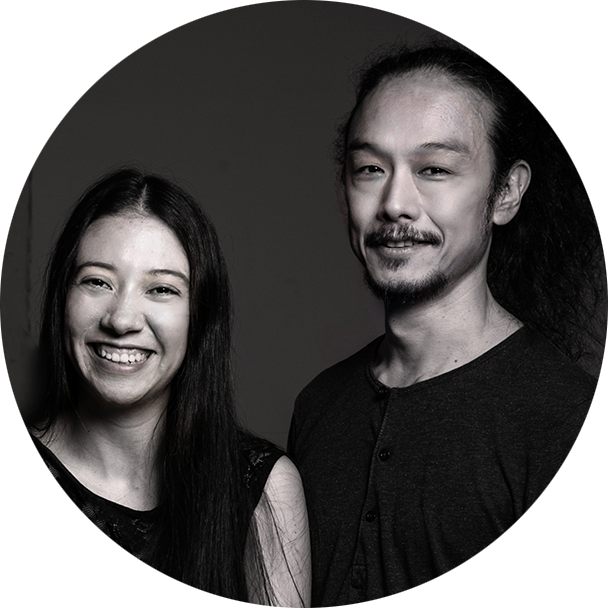Ximena Garnica & Shige Moriya | LEIMAY
Ximena Garnica and Shige Moriya are a Colombian and Japanese multidisciplinary artist duo. Their collaborative works manifest as live installations, dance and theater performances, operas, and sculptures that are presented in theaters, museums, galleries, and public spaces. Alongside their performative work, Ximena and Shige also invest their energy in critical research, printed and digital publications, and community projects. Shige and Ximena are the co-founders and artistic directors of LEIMAY and the LEIMAY Ensemble. The word LEIMAY is a Japanese term symbolizing the changing moment between darkness and the light of dawn, or the transition from one era to the other. Ximena and Shige work out of their home studio CAVE, which is located in Williamsburg, Brooklyn. Garnica and Moriya are Creative Capital, National Dance Project, National Endowment for the Arts and Café Royal Cultural Foundation Award recipients, and Watermill Center and Chelsea Factory Artists in Residence. Garnica received the Van Lier Fellowship for extraordinary stage directors and was a Distinguished Visiting Professor at the University of California, Riverside. She has been on the faculty of Massachusetts Institute of Technology (MIT), Marymount Manhattan College and Sarah Lawrence College. Garnica and Moriya have been nominated for The Herb Alpert Award in the Arts and a United States Artists Fellowship. Her article ‘LEIMAY, CAVE, and the New York Butoh Festival’ was recently published in The Routledge Companion to Butoh Performance.
Ximena and Shige’s work is rooted in questions of being, perception, interdependency and coexistence. They look to expose the multiplicity of spatial and temporal intervals that exist within the body, between materials and environments. They are curious about what emerges when the stability of habits, affirmation of binaries, social norm expectations, and the crystallization of identity dissolve and expose the potentialities of being.
Artist Statement for A Meal:
Cultivating a space for self-transcendent interactions within social practices is very important to us, especially at this moment of political tumult and broken self-ethics. For us as Japanese-born and Colombian-born artists, as a working couple, and as domestic partners, sharing a meal together has been vital to our relationship. Many times through a meal we transcend our cultural, religious and political backgrounds, and we find the ambiguity and sense of harmony we often look to expose in our artistic works.
In our work, we consider the body, at times dancer, actor or performer, to be a material entity along with other materials such as light, strings, and objects. We create work to expose the body as a material entity, as a presence full of dualities and ambiguities. A presence that can transcend the self to give us a glimpse into a hidden domain of infinite potential that is ultimately inexpressible. And yet, it is full of force and power. Václav Havel once spoke about self-transcendence as the only path to coexistence in today’s multicultural world. “Transcendence as the only real alternative to extinction;” his words resonate deeply with us. We are interested in what lays beyond our personal self, beyond the individual with a social identity. We often question how a body can exist and connect with its environment when it is stretched out of its social existence. Our work is rooted in questions of being, perception, and relationships, and aims to unveil moments of connection – between bodies, materials, sound, and light – by illuminating the in-between. The Meal hopes to manifest the in-between in the perceiver as an experience of spatial and temporal connections.
People around us increasingly eat alone, no longer adhering to specific times where families or communities would gather together. Recently, the rhythm and communality of sharing meals has been replaced by fast meals. We aim to create an experience that heightens the audience’s perception and nurtures a spirit of communality. The human is the only animal species that surrounds its food with rituals and takes account of hunger among others who are not direct relatives. Eating together around a specific area makes us human. We aim to elevate this sense of humanity in a world with much need for compassion and mindfulness.
